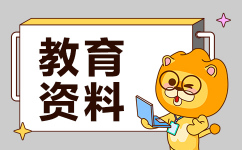六年级到了,是该好好准备小学阶段的复习工作了,以下是小编精心为大家收集整理的小学六年级英语知识点归纳总结精选3篇,希望对大家有所帮助,欢迎阅读分享。
小学六年级英语知识点归纳总结精选1
⼩升初英语必背知识点归纳
⼀、学⽣易错词汇:
1.a,an的选择:元⾳字母开头的单词⽤an,辅⾳字母开头的单词⽤a.
2.am,is,are的选择:单数⽤is,复数⽤are.I⽤am,you⽤are.
3.have,has的选择:表⽰某⼈有某物。单数⽤has,复数⽤have.I,you⽤have.
4.there is,there are的选择:表⽰某地有某物,某⼈。单数⽤there is,复数⽤there are.
5.some,any的选择:肯定句⽤some,疑问句和否定句⽤any.
6.疑问词的选择:what(什么)who(谁)where(哪⾥)whose(谁的)why(为什么)when(什么时候)
which(哪⼀个)how old(多⼤)how many(多少)how much(多少钱)
⼆、形容词⽐较级详解:
当我们需要对事物作出⽐较时,需要⽤到⽐较级。⽐较级的句⼦结构通常是:
什么+动词be(am,is,are)+形容词⽐较级+than(⽐)+什么,如:
I’m taller and heavier than you.(我⽐你更⾼和更重。)
An elephant is bigger than a tiger.(⼀只⼤象⽐⼀只⽼虎更⼤。)
形容词的⽐较级是在形容词的基础上变化⽽来的,它的变化规则是:
①⼀般的直接在词尾加er,如tall-taller,strong-stronger,
②以e结尾的,直接加r,如fine–finer,
③以辅⾳字母加y结尾的,先改y为i再加er,如funny-funnier
④双写最后的字母再加er,如big–bigger,thin–thinner,hot–hotter
☆注意⽐较的两者应该是互相对应的可⽐较的东西。
典型错误:My hair is longer than you.(我的头发⽐你更长。)
⽐较的两者是我的头发、你(整个⼈),那么⽐较的对象就没有可⽐性。
应该改为:My hair is longer than yours.或My hair is longer than your hair.⽐较级专项练习:
1、从⽅框中选出合适的单词完成句⼦heavy tall long big
(1)How is the Yellow River?
(2)How is Mr Green?He’s 175cm.
(3)How are your feet?I wear size 18.
(4)How is the fish?It’s 2kg.
2、根据句意写出所缺的单词
(1)I’m 12 years old.You’re 14.I’m than you.
(2)A rabbit’s tail is than a monkey’s tail.
(3)An elephant is than a pig.
(4)A lake is than a sea.
(5)A basketball is than a football.
3、根据中⽂完成句⼦
(1)我⽐我的弟弟⼤三岁.I’m than my brother.
(2)这棵树要⽐那棵树⾼.This tree than that one.
(3)你⽐他矮四厘⽶.You are than he.
⼈称代词物主代词
主格宾格
第⼀
⼈称单数I(我)me my(我的)
复数we(我们)us our(我们的)
第⼆
⼈称单数you(你)you your(你的)
复数you(你们)you your(你们的)
第三
⼈称单数he(他)him his(他的)
she(她)her her(她的)
it(它)it its(它的)
复数they(他们/她们/它们)them their(他们的/她们的/它们的)
六、句型专项归类:
1、肯定句:是指⽤肯定的语⽓来陈述的句⼦,如:
I’m a student.She is a doctor.He works in a hospital.
There are four fans in our classroom.He will eat lunch at 12:00.I watched TV yesterday evening.
2、否定句:含有否定词或表⽰否定意义词的句⼦,如:I’m not a student.She is not(isn’t)a doctor.
He does not(doesn’t)work in a hospital.There are not(aren’t)four fans in our classroom.
He will not(won’t)eat lunch at 12:00.I did not(didn’t)watch TV yesterday evening.
☆⼩结:否定句主要是在肯定句的基础上加上了否定词“not”。有动词be的句⼦则“not”加在be后⾯,可缩写
成“isn’t,aren’t”,但am not⼀般都分开写。没有动词be的句⼦则要先在主要动词的前⾯加上⼀个助动词(do,does,did),然后在它后⾯加上“not”,你也可以把它们缩写在⼀起如“don’t,doesn’t,didn’t)。这三个助动词要根据⼈称和时态来选择,其
中“does”只⽤于⼀般现在时主语是第三⼈称单数的情况,⽽“did”只⽤于⼀般过去时,不论主语是什么⼈称和数,都⽤“did”。
3、⼀般疑问句:是指询问事实的句⼦,此类句⼦必须⽤“yes”,或“no”来回答。
如:Are you a student?Yes,I am/No,I’m not.
Is she a doctor?Yes,she is./No,she isn’t.
Does he work in a hospital?Yes,he does./No,he doesn’t.
Are there four fans in our classroom?Yes,there are./No,there aren’t.
Are you going to buy a comic book tonight?Yes,I am./No,I am not.(Yes,we are./No,we aren’t.)
Will he eat lunch at 12:00?Yes,I will./No,I will not(won’t).
Are they swimming?Yes,they are./No,they aren’t.
Did you watch TV yesterday evening?Yes,I did./No,I didn’t.
☆⼩结:⼀般疑问句是在肯定句的基础上
①把动词be调到⾸位,其他照写,末尾标点符号变成问号即可。
②没有动词be的句⼦则要在句⾸加上⼀个助动词(do,does,did)再把紧跟在后⾯的动词变回原形,末尾标点符号变成问号即可。
这三个助动词也要根据⼈称和时态来选择,其中“does”只⽤于⼀般现在时主语是第三⼈称单数的情况,⽽“did”只⽤于⼀般过去时,不论主语是什么⼈称和数,都⽤“did”。⼀般疑问句有个重要的原则就是问和答要⼀致,即问句⾥的第⼀个单词(助动词)和简略答句⾥的这个词是⼀致的。
小学六年级英语知识点归纳总结精选2
一、名词复数规则
1.一般情况下,直接加-s,如:book-books,bag-bags,cat-cats,bed-beds
2.以s.x.sh.ch结尾,加-es,如:bus-buses,box-boxes,brush-brushes,watch-watches
2.Daniel and Tommy(be)in Class One.
3.We(not watch)TV on Monday.
4.Nick(not go)to the zoo on Sunday.
5.they(like)the World Cup?
6.What they often(do)on Saturdays?
7.your parents(read)newspapers every day?
8.The girl(teach)us English on Sundays.
9.She and I(take)a walk together every evening.
10.There(be)some water in the bottle.
11.Mike(like)cooking.
12.They(have)the same hobby.
13.My aunt(look)after her baby carefully.
14.You always(do)your homework well.
15.I(be)ill.I’m staying in bed.
16.She(go)to school from Monday to Friday.
17.Liu Tao(do)not like PE.
18.The child often(watch)TV in the evening.
19.Su Hai and Su Yang(have)eight lessons this term.
20.-What day(be)it today?-It’s Saturday
三、现在进行时
1.现在进行时表示现在正在进行或发生的动作,也可表示当前一段时间内的活动或现阶段正在进行的动作。
2.现在进行时的肯定句基本结构为be+动词ing.
3.现在进行时的否定句在be后加not。
4.现在进行时的一般疑问句把be动词调到句首。
5.现在进行时的特殊疑问的基本结构为:疑问词+be+主语+动词ing?
动词加ing的变化规则1.一般情况下,直接加ing,如:cook-cooking2.以不发音的e结尾,去e加ing,如:make-making,taste-tasting3.如果末尾是一个元音字母和一个辅音字母,双写末尾的辅音字母,再加ing,如:run-running,stop-stopping
写出下列动词的现在分词:
play run swim make
go like write_ski
read have sing dance
put see buy love
live take come get
stop sit begin shop
二、用所给的动词的正确形式填空:
1.The boy(draw)a picture now.
2.Listen.Some girls(sing)in the classroom.
3.My mother(cook)some nice food now.
4.What you(do)now?
5.Look.They(have)an English lesson.
6.They(not,water)the flowers now.
过去时练习
写出下列动词的过去式
is\am plant are
drink play go make
does dance worry ask
taste eat put
kick pass do
Be动词的过去时练习(1)
Name No.Date
用be动词的适当形式填空
1.I at school just now.
2.He at the camp last week.
3.We students two years ago.
4.They on the farm a moment ago.
5.Yang Ling eleven years old last year.
6.There an apple on the plate yesterday.
7.There some milk in the fridge on Sunday.
8.The mobile phone on the sofa yesterday evening.
用be动词的适当形式填空
1.I an English teacher now.
2.She happy yesterday.
3.They glad to see each other last month.
行为动词的过去时练习(2)
用be动词的适当形式填空
1.I(watch)a cartoon on Saturday.
2.Her father(read)a newspaper last night.
3.We to zoo yesterday,we to the park.(go)
4.you(visit)your relatives last Spring Festival?
5.he(fly)a kite on Sunday?Yes,he.
6.Gao Shan(pull)up carrots last National Day holiday.
7.I(sweep)the floor yesterday,but my mother.
8.What she(find)in the garden last morning?She(find)a beautiful butterfly.
(二)小升初英语词类:
动词、名词和形容词不太容易区分,如不能一眼看出,可用如下方法:
先用“一(量词)”(如:一个、一张等)和这个词连起来说,如说得通,一般认为是名词;说不通再用“很”去判断,就是把“很”和为个词连起来说,说得通一般就是形容词;都说不通就是动词。(目前我们学过的,以后可能不同)(另外一些很明显的,如人称代词、数词、情态动词等一下就可以知道)
1、动词
这里所说的动词是指各种动词总称,其中包括行为动词(就是我们平时总说的那种动词)、be动词、情态动词。
(1)行为动词
就是我们平时上课时说的动词,表示某一动作或行为。如:sweep、live等。
行为动词我们已学过它们的四种形式:

